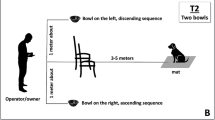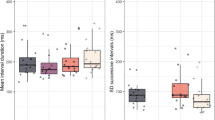Abstract
High vocal center (HVC) can produce single sound with one or two syllables by the single-type vocal control pattern in songbirds ruddy bunting (Emberiza rutila). It obviously shows left-side dominance in controlling double syllables, principal frequency (PF) and increasing sound intensity of the evoked calls. Meanwhile, the complex-type control pattern can produce complex calls with multisyllable, and also shows significant left-side dominance in controlling the number of syllables, tone changing and sound intensity. These indicate that left-side HVC controls higher frequency and complicated sentence structure. The basic vocal center, dorsomedial nucleus of the intercollicular complex (DM), controls the monosyllable sound in songbirds, and shows left-side dominance in controlling both the number of syllable and sound intensity. These results not only provide some direct evidence for left-side dominance in high vocal center, but also indicate that there is some internal connection between the high and basic vocal centers in songbirds.
Similar content being viewed by others
References
Li, D. F., Jiang, J. C., Li, J. et al., Effect of tracheosyringeal denervation on call in greenfinch (Carduelis sinica), Science in China, Ser. C, 1999, 42(6): 561–569.
Jiang, J. C., Li, D. F., Li, J. et al., Effect of lesion of nucleus robustus archistriatalis on call in Bramble finch, Science in China, Ser. C, 2001, 44(5): 479–488.
Lavenex, P. B., Vocal production mechanisms in the budgerigar (Melopsittacus undulatus): The presence and implications of amplitude modulation, J.Acoust. Soc.Am., 1999, 106(1): 491–505.
Paton, J. A., Manogue, K. R., Bilateral interactions within the vocal control pathway of birds: Two evolutionary alternatives, J. Comp. Neurol., 1982, 212(4): 329–335.
Vu, E. T., Mazurek, M. E., Duo, Y. C., Identification of a forebrain motor programming network for the learned song of zebra finches, J. Neurosci., 1994, 14: 6924–6934.
Simpson, H. B., Vicario, D. S., Brain pathways for learned and unlearned vocalizations differ in zebra finch, J. Neurosci., 1990, 10(50): 1541–1556.
Willams, H., Crane, L. A., Hale, T. K. et al., Right-side dominance for song control in the zebra finch, J. Neurobiol., 1992, 23(8): 1006–1020.
Nottebohm, F., Plasticity in adult avian central nervous system: Possible relation between hormones, learning and brain repair. Higher functions of the nervous system, Handbook of Physiology, New York: American Physiological Society, 1987, 357–378.
Peek, F. W., Youngren, O. M., Phillips, R. E., Repetitive vocalization evoked by electrical stimulation of avian brains (IV) —Evoked and spontaneous activity in expiratory and inspiratory nerves and muscles of the chicken (Gallus gallus), Brain Behav. Evol., 1975, 12(1-2): 1–41.
Li, D. F., Lan, S. C., Location of midbrain vocal areas in two spices of oscines, Acta Northeast Normal University (Natural Sciences) (in Chinese), 1991, 1: 93–97.
Newman, J. D., Midbrain control of vocalizations in red-winged blackbirds (Agelaius phoenicens), Brain Res., 1972, 48: 227–242.
Stokes, T. M., Lionard, C. M., Nottebohm, F., The telencephalon diencephalon and mesencephalon of the canary, seinus canaria in sterotaxic coordinate, J. Comp. Neurol., 1974, 156(3): 337–374.
Perkel, D. J., Farries, M. A., Luo, M. et al., Electrophysiological analysis of a songbird basal ganglia circuit essential for vocal plasticity, Brain Res. Bull., 2002, 57(3-4): 529–532.
Li, D. F., The fiber connections of higher vocal center in zebra finch (Poephila guttata), Acta Zoologica Sinica (in Chinese), 1996, 42(4): 444.
Mooney, R., Hoese, W., Nowicki, S., Auditory representation of the vocal repertoire in a songbird with multiple song types, Proc. Natl. Acad. Sci. USA, 2001, 98(2): 12778–12783.
Wild, J. M., Arends, J. J., A respiratory-vocal pathway in the brainstem of the pigeon, Brain Res., 1987, 407(1): 191–194.
Larsen, O. N., Goller, F., Direct observation of syringeal muscle function in songbirds and a parrot, J. Exp. Biol., 2002, 205(Pt):25–35.
Hough, G. E., Volman, S. F., Short-term and long-term effects of vocal distortion on song maintenance in zebra finches, J. Neurosci., 2002, 22(3): 1177–1186.
Willams, H., Nottebohm, F., Auditory responses in avain vocal motor neurons: A motor theory for song perception in birds, Science, 1985, 229(4710): 279–282.
Nordeen, K. W., Nordeen, E. J., Auditory feedback is necessary for the maintenance of stereotyped song in adult zebra finch, Behav. Neurol. Biol., 1992, 57(1): 58–66.
Hartley, R. S., Suthers, R. A., Lateralization of syringeal function during song production in the canary, J. Neurobiol., 1990, 21(8): 1236–1248.
Li, D. F., Zuo, M. X., Cheng, L. et al., Effects of electrostimulation of midbrain on vocalization and respiratory in Quail, Zoological Research (in Chinese), 1991, 12(1): 16.
Lan, S. C., An observation on phonation, somatic motor and other responses induced by midbrain stimulation of birds in waking state, Acta Physiologica Sinica (in Chinese), 1962, 25(1): 36–41.
Reinke, H., Wild, J. M., Avian inspiratory premotor neurons: connections with respiratory and vocal nuclei, Soc. Neurosci. Abstr., 1996, 22:153.
Wild, J. M., Li, D. F., Eagleton, C., Projections of the dorsomedial nucleus of the intercollicular complex (DM) in relation to respiratory-vocal nuclei in the brainstem of pigeon (Columba livia) and zebra finch (Taeniopygia guttata), J. Comp. Neurol., 1997, 377(3): 392–413.
Reinke, H., Wild, J. M., Identification and connections of inspiratory premotor neurons in songbirds and budgerigar, J. Comp. Neurol., 1998, 391(2): 147–163.
Author information
Authors and Affiliations
Corresponding author
Rights and permissions
About this article
Cite this article
Zhao, J., Jiang, J. & Li, D. Control pattern of vocal center for vocalization in ruddy bunting (Emberiza rutila). Sci. China Ser. C.-Life Sci. 46, 615–622 (2003). https://doi.org/10.1360/02yc0079
Received:
Issue Date:
DOI: https://doi.org/10.1360/02yc0079




